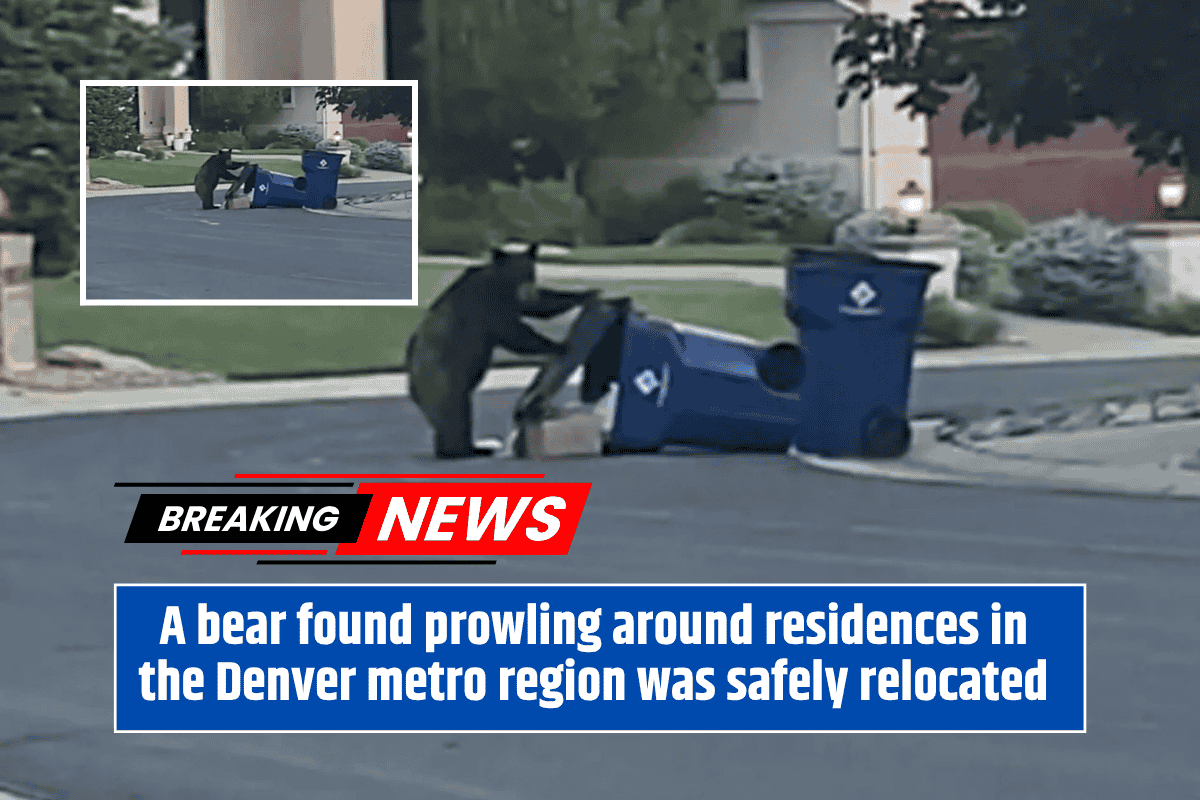Over the weekend, a bear that had been wandering through suburban neighborhoods in the Denver metro area was safely tranquilized and relocated by Colorado Parks and Wildlife (CPW). This bear, which had been spotted in various parts of the area, was likely the same one seen in the City of Lone Tree a couple of weeks ago. Experts believe the bear was attracted to the neighborhoods by easily accessible food sources like trash, bird feeders, and pet food.
The Bear’s Journey Through Suburban Neighborhoods
The bear was first seen in the City of Lone Tree about two weeks ago and was spotted again on May 31 in the southern part of Aurora, specifically in the 5800 block of South Genoa Court. Later that same day, a resident in the 27500 block of East Elmhurst Place in Aurora captured video of the bear and contacted authorities. A response team, including Aurora Police, Aurora Fire Rescue, and CPW, arrived at the scene.
CPW officials tranquilized the bear safely and transported it to a more appropriate habitat. While the bear was not considered dangerous in this particular case, the incident highlights a growing issue in Colorado of bears entering residential areas in search of food.
Why Bears Are Entering Suburban Areas
Wildlife experts believe the bear, likely a yearling, was drawn into neighborhoods by the availability of food such as trash, bird feeders, and pet food. CPW spokesperson Kara Van Hoose explained that bears are opportunistic feeders and will seek food wherever it is accessible. “Bears are going to find food where they can. Unfortunately, they see our trash as food,” she said. As long as bears continue to find these unnatural food sources, they are likely to keep moving into more urban areas, putting both the bears and people at risk.
How to Prevent Bear Encounters
To reduce the chances of future bear encounters, CPW urges residents to take several precautions:
- Store trash securely and indoors when possible
- Remove bird feeders during the active bear season
- Store pet food and grills in secure places
- Never intentionally feed bears
If residents encounter a bear, CPW advises staying in a safe location and attempting to haze the bear from a distance by yelling, setting off a car alarm, or using air horns. “We want bears to have a healthy fear of humans. That’s what keeps both bears and people safe,” Van Hoose explained.
Relocating the Bear
CPW officials decided to tranquilize the bear after they were able to track it down in Arapahoe County. The bear was relocated to a more suitable habitat, away from urban areas. According to Van Hoose, the bear’s movement was likely influenced by the availability of food in residential areas. “This bear’s journey isn’t normal,” she said. “It was likely driven by the availability of food. Every time it found food, it kept moving farther away from its natural range.”
The Role of the Community in Wildlife Management
Tracking and relocating wildlife can be challenging, but community reports and videos are essential for locating and safely handling these animals. CPW encourages residents to report any bear sightings directly to them during business hours or to local law enforcement.
As Colorado’s population grows and urban development continues to expand into traditional wildlife habitats, human-bear encounters are expected to increase. CPW emphasizes that residents can play a key role in keeping bears wild by removing food sources and minimizing opportunities for bears to enter residential areas.
The relocation of the bear over the weekend serves as a reminder of the growing challenges of human-wildlife interactions in Colorado. With more development pushing into natural habitats, bears are increasingly finding their way into suburban neighborhoods. By following safety guidelines and removing attractants, residents can help prevent future encounters and ensure the safety of both humans and wildlife.
